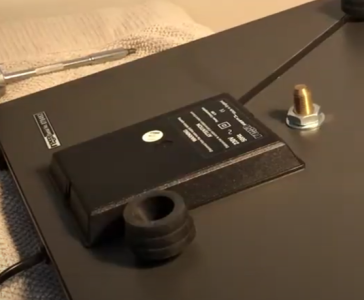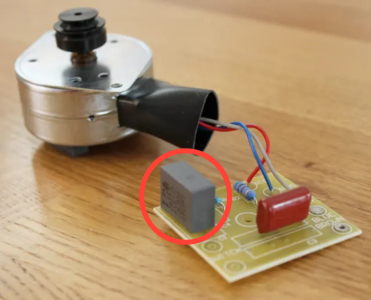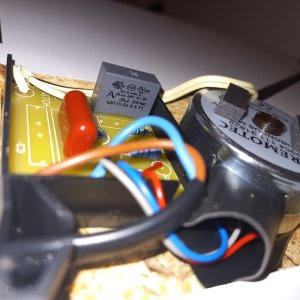some good clues from your report, let me break these down based on your findings:
problem statement:
1) has a problem starting, you have to rotate the platter manually to get it to turn
2) even after the platter starts turning, it gets up to the intended rpm (when it does) with great difficulty
3) there is apparently little torque, the weight of the record impacts the rpm
4) pulley appears to vibrate (probably what you meant is, you can feel the pulley attempt to turn but it just doesn't enough torque to start)
5) you have confirmed that it is not a bearing issue
Assuming that your turntable's platter turns freely without the belt (confirmed to be ok, by your checks), and assuming you checked the belt and it has the required play, then it's the motor and related circuitry.
Caution: Only attempt to do this if you are experienced with electronics DIY, specifically with understanding electronics and electrical circuits, electrical wiring and soldering iron usage / soldering techniques. Also a good understanding of different capacitor types/brands and capacitor quality, is required. A basic understanding on how to check capacitors (and a capacitance/ESR meter) is also required.
You can open up the power supply casing under the turntable.
View attachment 77525
Unscrew the power supply PCB and check for dry solder joints. If the joints are good, check the capacitors, especially the 0.22 mfd capacitor, pointed to, in the pictures below:
View attachment 77526
View attachment 77528
The 0.22 mfd capacitor is likely to be the culprit. When replacing this capacitor avoid using the readily available low-cost types that you will commonly find in re-charchable torches, re-chargeable emergency lights, etc. Always use the higher quality polypropylene metal film box-type capacitor for example,
like this one or similar, as a replacement. Use the same voltage rating as the existing one, or higher (but keep an eye on the size for mounting on your powersupply PCB)
Alternately if the powersupply capacitors are ok, then there is only one suspect left, and that's the motor itself (which is highly unlikely especially if your deck is a relatively new one - you've not mentioned the age

)







